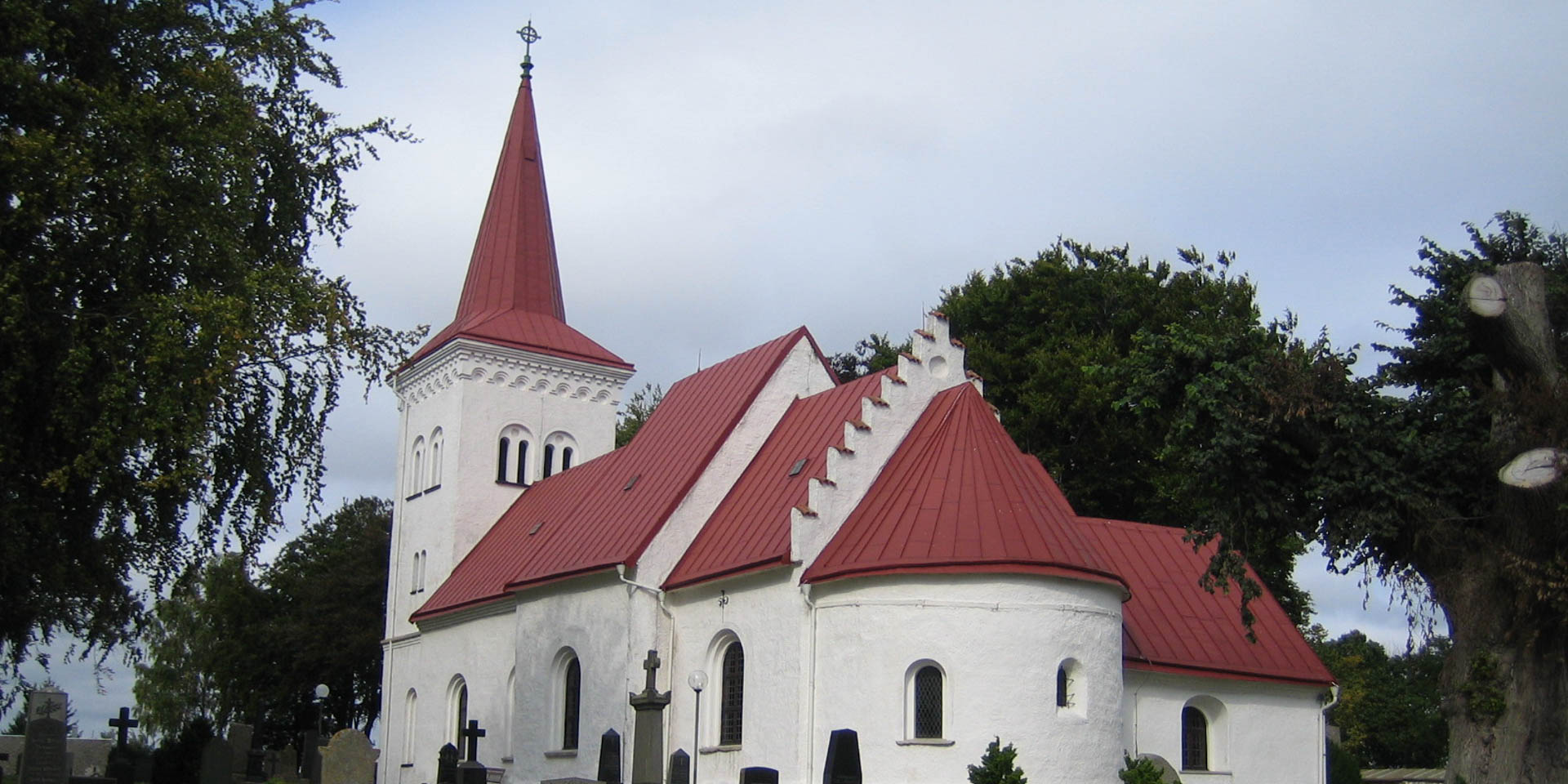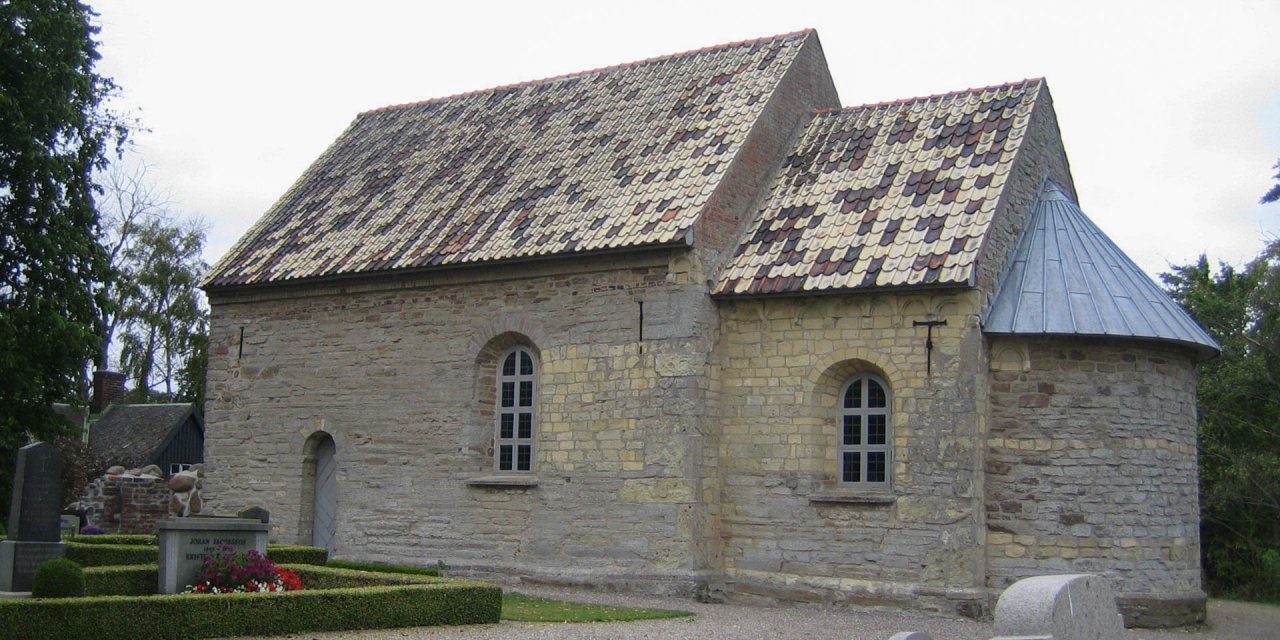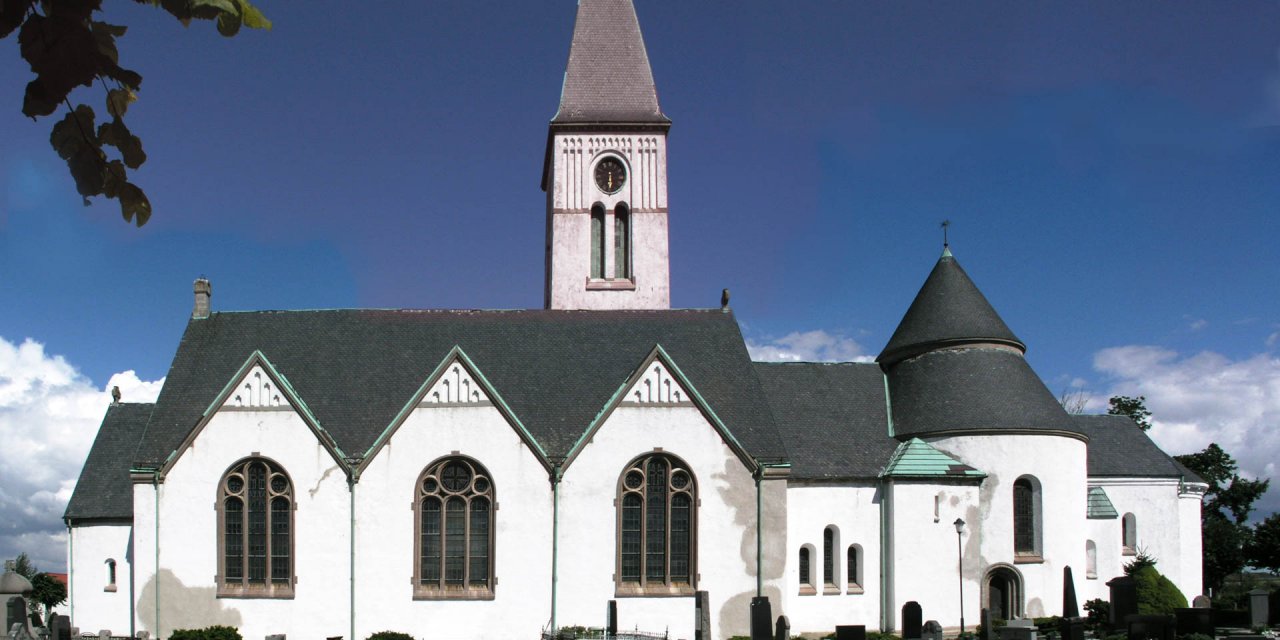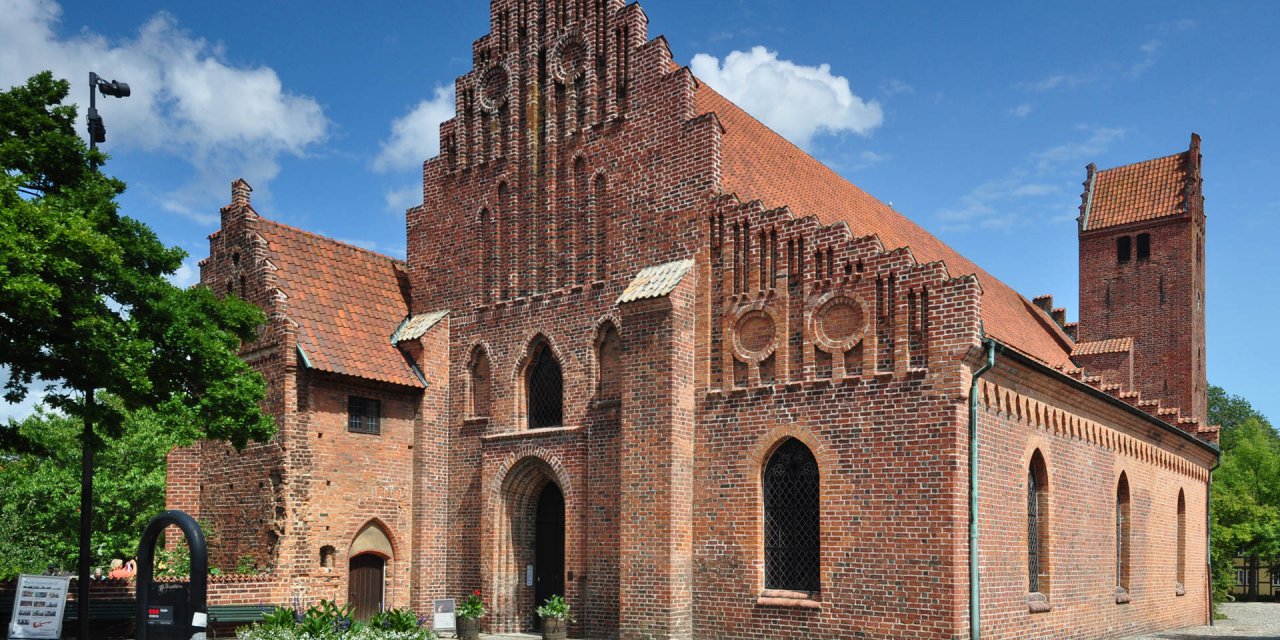

Stora Köpinge Kyrka
Medieval church in Stora Köpinge
The early 12th century Stora Köpinge Kyrka is the relatively lavishly decorated church of the small village Stora Köpinge in the northeast of the municipality of Ystad.
The reason why the church in Stora Köpinge was unusually magnificent for the village inhabited by only about 120 people is that the village on the small river Nybroån was an important trading centre before the foundation of Ystad.
At the beginning of the 12th century, the nave of the church was built and the vaulted ceiling was decorated with the lime paintings that still exist today. The motifs show Saint Laurentius and Saint Nicholas as well as John the Baptist.
Towards the end of the 12th century, the lower altar room and the semicircular apse were added. At the same time the enlargement of the nave began, whereby this extension was only carried out in the eastern half of this part of the building. It is assumed that the declining importance of Stora Köpinge at that time due to the founding of Ystad was responsible for stopping the expansion.
Nevertheless, the ceiling vaults in the eastern half of the nave, the sanctuary and the apse were decorated with magnificent paintings in the late 14th century. They are credited to the so-called Snårestadmästaren, an anonymous group of church painters who decorated several churches in the central and eastern part of southern Skåne.
Gorgeous objects inside the church
The altarpiece created in 1610 with its extraordinarily magnificent carvings is considered the most important object of historical church art within the Stora Köpinge Kyrka. It was made by an anonymous master, who is also known as Köpingsmästaren and whose works surpass those of the most famous art carvers of his time, such as Jakob Kremberg.
The design of the altar suggests that the unknown master gained experience in Rome and was inspired by Italian Renaissance masters such as Michelangelo and Rafael. A similar style can be found in the pulpit with canopy, also decorated with elaborate carvings, which was created by the same artist in 1597.
The canopy above the baptismal font is also the work of the unknown master, while the almost square baptismal font, carved from stone, dates back to the time the church was built in the 12th century.



